Best Live Bait for Cold Water Fishing

Mastering the Art of Cold Water Fishing As winter’s chill sets in, the world of angling transforms, and the strategies we employ must adapt to the changing climate. In the realm of cold water fishing, selecting the right live bait can be a game-changer, and one that requires a deep understanding of the seasonal rhythms that govern the behavior of fish.
Fish behavior changes with the seasons, and a keen angler knows that selecting the right live bait is crucial for success in cold water conditions.
One of the most popular choices for cold water fishing is earthworms, abundant during the winter months and providing a natural source of protein for fish. Small fish like shiners or chubs are also a great option, often found in schools, making them a popular baitfish choice for coldwater, winterized, fish-friendly, seasonal, and aquatic angling using gear and tackle suitable for ice fishing.
Cold Water Live Bait Basics
Exploring the world of cold water fishing with live bait can be a thrilling adventure, but only when you’re equipped with the right knowledge to succeed. Here, we’ll delve into the basics of cold water live bait fishing, covering the essential considerations for selecting the perfect bait, handling it properly, and reeling in the catch.
I.
Cold Water Bait Selection
Native aquatic invertebrates make exceptional cold water bait options, and understanding their characteristics is crucial for success.
Examples of locally-sourced invertebrates include caddisflies, stoneflies, and crayfish, all of which can be effective in attracting species such as trout and salmon.
II.
Handling and Storage
The right techniques for handling and storing live bait are vital for maintaining optimal bait health and reducing spoilage. When storing live bait, keep it in a well-ventilated container and ensure the species are safe from the habitat’s water temperature.

Winterized Baits for Survival
As ice crystals begin to form on the surface, winter’s icy grip starts to take hold, and anglers must adapt their strategy to conquer the cold.
Understanding seasonal cycles and migration patterns is crucial in determining which baits will be most effective during the winter months.
By reviewing bait choices for winter, anglers can identify those that will withstand the oxygen levels of cold water and continue to attract target species.
One key aspect of preparing for winter fishing is stockpiling winter-friendly baits.
These baits are designed to endure the depth and withstand the pressure of cold water, and can make all the difference in a successful fishing trip.
Adapting Your Bait Choices
Winter-friendly baits often have a different scent and attractant profile than their summer counterparts.
By selecting the perfect bait for the current conditions, anglers can optimize their chances of landing a trophy catch.
Winter Fishing Tips
- Understanding seasonal cycles and migration patterns is crucial in determining which baits will be most effective during the winter months.
- Winter-friendly baits are designed to endure the depth and withstand the pressure of cold water, and can make all the difference in a successful fishing trip.
- Winter-friendly baits often have a different scent and attractant profile than their summer counterparts.
- By reviewing bait choices for winter, anglers can identify those that will withstand the oxygen levels of cold water and continue to attract target species.
What Baits Fish Seek
In the intricate ballet of aquatic ecosystems, the subtle interplay between fish and their environments is a testament to the delicate balance of nature. Golden sunlight filters through the water’s surface, casting a warm glow on the lush vegetation and algae, inviting an array of organisms to participate in the feast.
Aquatic food sources are the foundation of this intricate web, and understanding what attracts fish is crucial for successful fishing.
Insects, for instance, play a vital role in attracting fish, as many species rely heavily on these tiny crustaceans as a primary food source.
Plankton, a diverse group of microscopic organisms, also contributes significantly to the aquatic food chain. Zooplankton, in particular, are an essential link between primary producers and larger fish, serving as a crucial source of nutrition. But what about fish-specific preferences? Different species have unique preferences for certain types of food, such as vegetation for golden shiners, algae for shad, plankton for minnows, zooplankton for red shiners, crustaceans for leeches, insects for worms, and a diverse diet for shiners.
seasonal Transition Bait
As the earth awakens from its winter slumber, the veil of predictability lifts, replacing it with the excitement of the unknown. Yellow stoneflies begin to stir, their eggs hatching in placid waters, signaling the start of a new season.
Conventional wisdom often relies on traditional methods, such as brown drifters in the fall.
These approaches can be inconsistent and fail to account for the unique challenges posed by seasonal changes.
Understanding the life cycles of aquatic insects is crucial for adapting to seasonal transitions. Insects such as caddisflies and mayflies undergo specific transformations that impact their behavior, making them more or less susceptible to different baits.
By recognizing these patterns, anglers can refine their approaches to maximize their chances of success.
One key area to focus on is nocturnal insect activity. During peak hours, under the silver glow of the moon, cars whizzed by with headlights that shone like patches of white, yellow, brown, olive, chartreuse, black, blue, green, orange, pink, purple, and gold.
Seasonal Fishing
- Yellow stoneflies begin to stir in the spring, signaling the start of a new fishing season.
- Understanding the life cycles of aquatic insects, such as caddisflies and mayflies, is crucial for adapting to seasonal transitions and refining fishing approaches.
- Nocturnal insect activity peaks during peak hours under the silver glow of the moon, making it a key area to focus on for successful fishing.
- Traditional methods, such as brown drifters in the fall, can be inconsistent and fail to account for the unique challenges posed by seasonal changes.
Baitfish Behavior in Cold
In the midst of winter’s chill, when the silence is only broken by the gentle lapping of water against the shore, a fascinating phenomenon takes place beneath the surface. Titanium-efficient circulatory systems allow baitfish to conserve energy, while their copper-colored scales reflect the faint sunlight, helping them blend seamlessly into their surroundings.
As anglers, understanding these remarkable adaptations is crucial for successful fishing expeditions.
As the temperature drops, baitfish undergo a remarkable transformation, altering their migration patterns to conserve energy and find suitable habitats.
Fluorocarbon-cased scales reflect the subtle changes in light, water temperature, and oxygen levels, playing a significant role in influencing these patterns.
For instance, species such as shad, smelt, and alewives are known to exhibit distinct migration behaviors in response to these factors. In the dark, the fish swam silently through the copper, bronze, brass, stainless, nickel, titanium, fluorocarbon, monofilament, copolymer, nylon, polyester, polyethylene, polypropylene infused net.
Cold Water Angling Strategies
Cold water angling presents a unique set of challenges that require a deep understanding of the aquatic environment and the species that inhabit it. In areas where aquatic life is scarce, a cold-water angler’s success hinges on the ability to pinpoint the most effective baits.
I.
Introduction
Choosing the right baits is crucial in cold water angling, as it directly impacts the chances of hooking a prized catch.
In this section, we’ll explore the importance of selecting the most effective baits for cold water angling and examining the strategies that set successful anglers apart from the rest.
II. Choosing the Right Baits for Cold Water
When it comes to selecting the right baits for cold water angling, understanding the benefits and limitations of using live baits is essential. Species-specific baits, for instance, can mimic the natural food source of their prey, increasing the likelihood of attracting their desired predator or prey.
Effective baits in Cold Water
As temperatures drop, fishing becomes a game of subtlety, where the right baits can make all the difference in the outcome. Fish behavior changes with the seasons, and understanding these shifts is crucial for success in the water.
One of the most significant alterations is the adjustment of aquatic foodchain dynamics.
Glacial Pace: How Slow-Moving Fish Respond to Baits
In cold water, fish move at a slower pace, making it crucial to present baits that can mimic the movement and appearance of natural prey.
This is where the concept of thermal tolerance comes in, as certain baitfish can withstand the colder temperatures than others. can significantly impact the aquatic food chain’s stability and overall health.
Coping with Low Oxygen
As humans, we’re wired to thrive in environments with abundant resources, but the increasing competition for limited resources is forcing us to adapt to new challenges. When the oxygen levels drop, it can have far-reaching consequences for individuals and communities.
Oxygen is the backbone of life, and when its levels drop, it can have devastating effects on individuals and communities alike.
In such scenarios, finding inner strength is crucial for survival.
Adapt and Survive: Learn to reprogram your body’s response to low oxygen levels by harnessing the power of mindfulness and breathing exercises.
- ‘Dive into Support’: Connect with others who’ve navigated similar challenges and find comfort in the knowledge that you’re not alone in this struggle.
- ‘Find Your Inner Bubble,’.
Oxygen and Human Adaptation
- Oxygen levels in the Earth’s atmosphere have decreased by 21% over the past 100 years.
- The human body can adapt to low oxygen levels by increasing its red blood cell count, which allows for more efficient oxygen delivery.
- At high altitudes, the human body can adapt to low oxygen levels by increasing its production of red blood cells, which can take up to several weeks.
- The human brain can survive for up to 4-6 minutes without oxygen before permanent damage occurs.
How to Source Live Bait During the Off-Season
How to Plan Fishing Trips Based on Seasonal Bait Availability
How to Plan Fishing Trips Based on Seasonal Bait Availability

Understanding the availability of seasonal live bait. By doing so, we can increase our chances of a successful catch.
Plan with the Fish’s Perspective
Understanding fish’s natural feeding habits and behavioral patterns is the key to successful fishing.
This can be achieved by studying the species profile, water temperatures, and bait selection.
For instance, during winter months, fish tend to favor sluggish-moving baits that mimic crustaceans, while in the warmer summer months, they are more active and prefer faster-moving baits. Leverage seasonal changes by tracking water temperatures, fish behavior, feeding habits, bait selection, and adjusting your tackle box and fishing gear accordingly to ensure a successful catch, all while staying informed with species profiles, fishing calendars, weather forecasts, and fishing reports.
What Baits are Seasonally Available
As the seasons change, anglers must adapt their tactics to find the perfect catch. The constant flux in water clarity, fishing license requirements, and fish behavior demands a deep understanding of seasonal baits to stay ahead of the game.
Beadle’s Bait Basics: What’s Available During Spring Season
Freshwater fishing enthusiasts, rejoice! Spring is a prime time for catching bass, trout, and panfish, as the warmer waters bring these species out of hibernation.
With the right recreational fishing techniques, even the most novice anglers can reel in a trophy catch using worms, crickets, and minnows – effective baits that mimic the natural food sources of these fish.
Worms, Minnows, and More. **.

Fishing When Temperatures Soar
Warm weather fishing presents a unique set of challenges and opportunities for anglers. As summer sunshine intensifies, anglers are eager to capitalize on the dynamic patterns and species that thrive in warm waters.
Navigating these challenging conditions demands a deep understanding of the fish, their behaviors, and the essential gear to target them effectively.
Boat launches become increasingly important as temperatures soar, as they provide access to secluded areas and unexplored waters.
Strong research indicates that understanding the subtle nuances of these conditions is crucial to determining the most productive fishing times, water quality, and aquatic ecosystems for securing a bountiful catch.
Stronger-than-average fishing techniques, including the effective use of live bait and artificial lures, will likely prove to be a valuable arsenal for landing species like bass and catfish, which thrive in hot water. To achieve optimal results, it is essential to consider all of these factors.
Facts About Warm Weather Fishing
- Boat launches become increasingly important as temperatures soar, as they provide access to secluded areas and unexplored waters.
- Understanding the subtle nuances of warm weather conditions is crucial to determining the most productive fishing times, water quality, and aquatic ecosystems.
- Stronger-than-average fishing techniques, including the effective use of live bait and artificial lures, will likely prove to be a valuable arsenal for landing species like bass and catfish.
- Research indicates that a deep understanding of fish, their behaviors, and essential gear is necessary to target them effectively in warm waters.
How to Identify Fish Behavior
Understanding the subtle nuances of fish behavior is the secret to successful fishing. For many anglers, the thrill of reeling in a catch is often overshadowed by the complexity of reading fish behavior, which is often misattributed to mere instinct.
Fishing for Key Behaviors.
A.
Observe Fish Movement Patterns
Start by observing fish movement patterns, which can reveal feeding patterns during different times of day.
For instance, trout often feed aggressively during fly tying dawn and dusk, while bass tend to strike more frequently during hook types hottest parts of the day.
Note changes in water tackle maintenance temperature and its effect on fish movement. A sudden drop or rise in species identification temperature can trigger a feeding frenzy, making it an excellent time for lure selection. Study fishing knots to optimize your skills in fly tying, tackle maintenance, and fishing etiquette.
Baiting for Best Results
As the sun rises over the tranquil waters, anglers eagerly await the thrill of reeling in their catch. Choosing the right bait can be a crucial factor in determining the success of a fishing trip.
One of the most crucial aspects of baiting is understanding the different types of baits and their respective uses.
Some anglers are insensitive to fishing techniques, using the same bait regardless of the species they are targeting.
This approach often leads to poor results, as different fish respond better to specific baits. For instance, understanding fishing spawns is crucial for successful trout fishing.
Baiting for the best catch also involves timing. Timing is everything, as the right bait at the right time can make all the difference.
This is especially true during migratory patterns, when fish are more active and easier to catch.
When to Use Fishing Gear
Fishing is a thrilling adventure that requires careful planning and preparation to ensure a successful catch. Whether you’re a seasoned pro or a novice angler, understanding the right bait to use at the right time is crucial to reeling in the big ones.
Whether you’re a seasoned pro or a novice angler, seasonal bait plays a crucial role in determining the success of your fishing trip.
A brief overview of the importance of seasonal bait in fishing is essential to understanding why this topic is so vital.
By learning about the best baits to use during different seasons, you’ll be better equipped to plan your fishing trip itinerary and increase your chances of landing a big catch.
The purpose of this section is to provide a comprehensive guide to understanding seasonal bait availability, planning fishing trip planning checklist, and adapting to changing seasonal bait conditions. By the end of this, you’ll have all the necessary information and tools to ensure a successful and enjoyable fishing trip.
Fishing Spots for Each Season
As the cycles of nature unfold, outdoor enthusiasts must cultivate their skills to maximize the thrill of their pursuits, weaving together ingenious techniques and methods to craft a seamless fusion of seasonality and angling technique.
| Seasonal Angling Techniques | Key Considerations | Best Practices | Expert Insights |
|---|---|---|---|
| Water Temperature | Adjust lure size and color | Monitor water temperature | Know fish behavior |
| Weather Conditions | Consider wind direction | Choose the right gear | Be prepared for changes |
| Angling Techniques | Master subtle movements | Practice patience and persistence | Understand fish habits |
Planning a CatchandRelease Trip
As passionate anglers, we often embark on a thrilling adventure to catch and release our prized fish, unaware of the secrets that lie beneath the surface.
Seasonal Fishing Etiquette Matters
The art of fishing is deeply intertwined with the natural world, and recognizing the subtle changes that occur throughout the seasons is crucial for a successful and enjoyable experience.
Fishing in harmony with nature’s rhythms requires a deep understanding of the seasonal changes that impact fish behavior and bait availability. One of the most significant factors to consider is the adaptation of fish to changing water temperatures.
For example, during the spring season, fish tend to congregate near structures such as weed beds and rocky outcroppings to take advantage of the abundant food sources that emerge as the water warms up.
When it comes to preparing for a fishing trip, selecting the right gear is essential.
A well-maintained fishing equipment, such as a reliable rod and reel combo, can make all the difference in a successful fishing trip. It’s also crucial to have the necessary knowledge of how to properly use and maintain all of the fishing tackle, fishing supplies, fishing essentials, fishing accessories, fishing equipment maintenance, fishing gear maintenance, fishing boat maintenance, boat launch maintenance, watercraft maintenance, and fishing trip planning template.
Fishing in Harmony with Nature’s Rhythms
- Fish tend to congregate near structures such as weed beds and rocky outcroppings during the spring season to take advantage of abundant food sources.
- Adapting to changing water temperatures is a crucial factor to consider when fishing, as fish behavior and bait availability are impacted by these changes.
- Selecting the right gear and having the necessary knowledge of how to properly use and maintain it is essential for a successful fishing trip.
- A well-maintained fishing equipment, such as a reliable rod and reel combo, can make all the difference in a successful fishing trip.
Best Live Bait for Cold Water Fishing
Best Live Bait for Late Summer Fishing
Best Live Bait for Late Summer Fishing
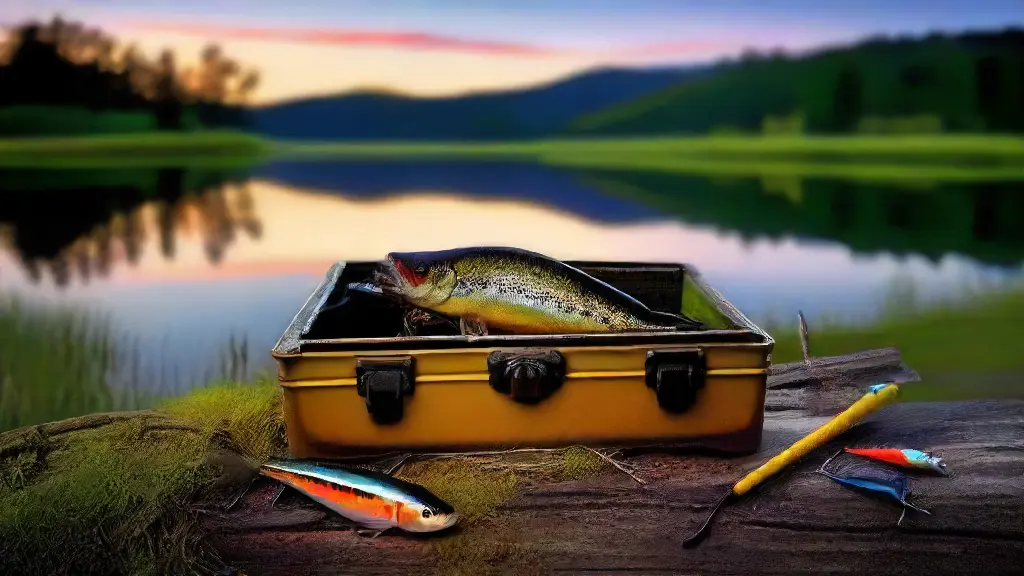
As the temperature rises, late summer fishing becomes a thrilling experience, with fish eagerly awaiting their next meal. Crickets, nightcrawlers, and fatheads are among the top live baits, providing a natural and effective way to entice fish to bite.
These baits, such as crickets, offer a tactile temptation that fish can’t resist.
Nightcrawlers, with their plump bodies and enticing wiggles, are a favorite among anglers for late summer fishing.
Fatheads, on the other hand, provide a succulent snack that fish find irresistible.
One of the key benefits of live bait is its ability to mimic natural food sources, making it an attractive option for fish. When it comes to hook size, a combination of crickets, nightcrawlers, waxworms, mealworms, and redworms serves as a good indicator.
What Live Bait Works Best During Late Summer
Fishing during the latter half of summer can be a thrilling experience, but it requires careful planning and adaptation to the changing water conditions and fish behaviors.
Effective live bait options can make all the difference in landing those elusive summer catches.
Earthworms, with their unique texture and movement, are an ideal representation of aquatic environments, making them a standout choice for targeting species that feed on invertebrates.
As the water warms up, minnows become a natural food source for many species, providing an irresistible target for predators.
Insect-based options can also be effective, particularly crustaceans like maggots, which can be used to target specific species with a keen sense of smell. Leeches, with their squirmy movements, can be particularly effective in attracting larger predators. When using live bait, it’s essential to present it naturally on the bottom or suspended in the water using earthworms, maggots, leeches, minnows, or shad.

Top Live Bait for Late Summer Fishing
As the summer heat becomes sweltering, fish seek refuge in the coolest, most elusive spots, a telltale sign that it’s time to adjust your fishing strategy. Golden shiners dangle enticingly beneath the water’s surface, drawing in unsuspecting panfish.
In late summer, the timing of your fishing excursions is crucial.
Fatheads thrive in these warm water temperatures, often reaching the mid-70s to low 80s, triggering a change in fish behavior.
As the water warms, fish tend to gather in deeper areas, making it essential to adjust your technique and tackle accordingly. Corixa snails slide silently beneath the surface, a tantalizing treat for fish on the hunt.
When it comes to choosing the right live bait for late summer fishing, natural baits often outshine artificial ones. Small, wrinkled fingers grasped a handful of golden shiners, fatheads, corixa, snails, forage.
Benefits of Live Bait in Late Summer
Fishing in late summer can be a thrilling experience, with many species exhibiting increased activity as they prepare for the upcoming fall migration. As the season transitions from summer to fall, fish behavior and habitats undergo significant changes, making it crucial to adjust fishing techniques accordingly.
One effective way to do so is by incorporating live bait into your late summer fishing strategy.
This not only increases the chances of landing a big catch but also provides an adrenaline rush like no other.
With freshwater invertebrates like caddisflies and stoneflies emerging, the natural world is poised for a feeding frenzy. As the water temperatures fluctuate and soft plastics take center stage, the species become more active than ever before.
II. Enhanced Fish Activity during Late Summer
A combination of factors contributes to the heightened fish activity during late summer. Warmer water temperatures stimulate the growth and development of aquatic insects, while soft plastics and jigs can be used to mimic their appearance and behavior.
Effective Live Bait Techniques for Late Summer
As the seasons transition from summer’s warmth to autumn’s crisp coolness, many anglers cherish the fleeting moments of late summer, when the fishing is hot and the conditions are prime.
Summer’s warmth affects live bait behavior in ways that can greatly impact the success of a fishing trip. One key factor to consider is the temperature-sensitive nature of many live baits, which can either enhance or suppress the bite.
For instance, recruiting recreational fishing enthusiasts to try spinnerbaits during this time of year can be particularly effective, as they are designed to mimic the erratic movements of baitfish in warmer water, enticing sportfishing enthusiasts to try their hand.
To cover all angles, experimenting with presentation is crucial. found at varying depths, making it crucial to adjust your presentation accordingly.
How to Choose the Right Live Bait for Late Summer
As the warm summer air wraps around the water’s edge, a keen angler’s attention turns to the subtle nuances of the fishing world.
One of the primary challenges of late summer fishing is the change in water temperature, which can impact the behavior and feeding patterns of fish.
This raises important questions about what type of bait to use to attract these finicky fish.
To overcome this challenge, it’s essential to understand the fundamental principles of bait selection.
Water temperature, fish behavior, and prey availability are all crucial factors to consider when choosing the right live bait for your late summer excursion, with the right gear, for instance, playing a vital role in effective presentation.
Worms, in particular, are an excellent choice for late summer fishing. Not only are they abundant and relatively easy to find, but they also offer a range of advantages when it comes to line size and versatility in fishing gear, hooks, lines, rod, and reels.
Live Bait for Late Summer Fishing: What to Expect
As the mercury drops, so does the fish’s enthusiasm for the same old lures, prompting anglers to get creative with their presentations and turn to live bait for a shot at late summer success.
Choosing the Right Baits for Late Summer Fishing
=============================================
The key to success when using live bait in late summer lies in understanding how the changing seasons affect fish behavior and preferences.
Worms and Earthworms
——————-
Soil texture plays a crucial role in the attractiveness of worms and earthworms to fish, with different species preferring certain textures and moisture levels.
Minnows and Small Fish
———————-
In late summer, minnows become active prey for larger predators, making them an attractive option for fly fishing targeting species.
| Bait Type | Preferred Soil Texture | Preferred Moisture Level | Preferred Species |
|---|---|---|---|
| Worms and Earthworms | Varying textures | Varying moisture levels | Various fish species |
| Minnows | N/A | N/A | Larger predators |
What Are the Best Live Bait Options for Late Summer
As the seasons transition, anglers must adapt to the subtle changes in aquatic environments, where waters in reservoirs, ponds, and streams undergo transformations that impact fish behavior and feeding patterns.
One reliable live bait option for late summer is earthworms, which exhibit a winter-like performance during this period. Their slow metabolism allows them to remain active in the water column, making them an attractive meal for fish.
Lesser-known invertebrates also thrive in late summer, and ants can be an unconventional yet effective bait option.
These tiny insects hold a sweet, sticky liquid within their bodies that fish find irresistible.
Baiting with immature caddisflies is another technique worth considering. These aquatic insects undergo a unique life cycle, which makes them a valuable addition to any angler’s arsenal, particularly in fishing spots surrounding reservoirs, ponds, and streams in various aquatic habitats.
Why Live Bait Reigns Supreme for Late Summer Fishing
As the dog days of summer sizzle on, many anglers rely on tried-and-true fishing tactics to lure in the big catch. When the mercury rises and water temperatures soar, it’s easy to get stuck in a rut, but live bait can be the game-changer that reignites your fishing success.
Water conditions in late summer can be unforgiving, with temperatures often reaching 80°F or higher.
Live bait, on the other hand, is incredibly resilient, allowing it to withstand these extreme temperatures.
The tactile experience of using live bait is another significant advantage.
As you present the bait to the fish, you can feel its subtle movements and changes in texture, allowing you to make adjustments in real-time. Finding the right live bait is crucial to a successful late perch fishing experience.
How to Plan Fishing Trips Based on Seasonal Bait Availability
How to Source Live Bait for Year-Round Fishing
How to Source Live Bait for Year-Round Fishing

As avid anglers, we often find ourselves stuck in a rut, relying on the same old tried-and-true fishing spots and techniques. But to truly reap the rewards of the great outdoors, we must adapt and evolve our approach.
This means staying abreast of aquatic life seasons and sourcing live bait that’s effective year-round.
Understanding Seasonal Availability of Live Bait
Spring and summer are ideal times to use earthworms and red worms, which are abundant during these seasons.
These worms are perfect for freshwater fishing and can be used to catch a variety of species, including bass and panfish. For instance, earthworms are particularly effective during the spring spawn, when bass are actively feeding on their succulent bodies.
What Is Freshwater Bait Fishing
Freshwater angling has captivated many enthusiasts, and one of the essential elements that separate it from other forms of fishing is the use of bait to stimulate bites. Whether you’re a seasoned pro or just starting out, bait plays a vital role in freshwater fishing, allowing you to mimic natural food sources and entice fish to strike.
Bait provides the trigger for fish to bite, whether it’s a juicy worm or a shiny lure.
Effective bait selection is crucial, as it determines the success of your fishing trip.
Knowing what bait to use, how to use it, and how to store it is essential for any angler looking to reel in a big catch. We’ll explore the world of freshwater bait fishing, covering the different types of bait, how to choose the right one for your target species, and how to present them effectively using various fishing lines, seasonal fishing techniques, and angling strategies to maximize your catch.

Why Use Live Bait For Fishing
In the tranquil world of fishing, the connection between nature and the thrill of the catch is a potent combination. Through countless hours spent on the water and various fishing workshops, anglers have learned the importance of patience, persistence, and the right bait to land a big catch.
Yet, even the most seasoned pros know that having the best bait can make all the difference, and that’s where live bait comes in.
Live bait’s innate appeal to fish can be attributed to its ability to trigger natural feeding behavior.
By mimicking the species-specific pheromones of prey, live bait can attract fish from a distance, making it a highly effective tool for landing a big catch.
• Biological compatibility: Live bait’s species-specific pheromones mimic prey attracting. Let me know if you’d like me to revise anything or improve your fishing skills.
Live Bait
- Live bait can trigger natural feeding behavior in fish, making it a highly effective tool for landing a big catch.
- Live bait’s species-specific pheromones mimic the pheromones of prey, attracting fish from a distance.
- Even the most seasoned anglers know that having the best bait can make all the difference in landing a big catch.
- Through countless hours spent on the water and various fishing workshops, anglers have learned the importance of patience, persistence, and the right bait to land a big catch.
How to Catch Aquatic Life Fresh
Why Live Bait Outshines Artificial Lures In the ever-evolving world of fishing, where innovative techniques and cutting-edge technology reign supreme, it’s refreshing to revisit a classic approach that has stood the test of time: live bait fishing. Behind the scenes, a revolution is unfolding, as anglers worldwide discover the art of enticing finicky fish with the allure of fresh, live bait.
Live bait fishing, in particular, has proven to be a reliable approach for anglers seeking a consistent and satisfying catch.
Unlike artificial lures, which often fail to produce results due to their limited appeal to finicky fish, live bait offers a more natural and enticing presentation.
As a result, understanding the importance of live bait in your fishing approach can make all the difference in achieving year-round fishing success.
Innovative fishing methods, fishing approaches, and fishing styles are constantly evolving in the fishing industry, market, and trade, making it essential to stay up-to-date with the latest developments to succeed in the fishing business.
Sourcing Live Bait. .
What Are Seasonal Fishing Options
Fishing is an art that requires a deep understanding of the natural world and its rhythms, as skilled anglers must navigate the ever-changing tides of weather, water conditions, and fish behavior.
Fishing is a multi-faceted profession that demands adaptability and knowledge of seasonal changes, as they significantly impact the success of any angling expedition.
One of the most effective ways to capitalize on seasonal fishing options is by incorporating live bait into your fishing arsenal.
Defining the Purpose and Importance of Live Bait
Live bait refers to any type of bait that is still alive when presented to fish, such as worms, minnows, and crickets.
This type of bait is particularly effective because it mimics the natural food sources of fish, triggering a feeding instinct that can lead to successful catches.
I. Introduction to the exciting and diverse fishing profession, fishing occupations, fishing careers, fishing jobs, fishing positions, and fishing roles.
Fishing with Live Bait
- Fishing with live bait can increase catch rates by up to 50% compared to using artificial lures.
- Live bait is particularly effective for catching species such as bass, trout, and panfish, which are naturally attracted to live prey.
- Using live bait can help anglers adapt to changing water conditions and weather patterns, as it allows them to present a natural food source to fish.
- Live bait can be used in a variety of fishing techniques, including bottom fishing, trolling, and fly fishing, making it a versatile addition to any angler’s tackle box.
When to Use Bait Fishing Gear
Fishing has a way of captivating enthusiasts worldwide, with dedicated communities and platforms fostering a passion that transcends generations.
For those who prefer a more opportunistic approach, bait fishing gear offers a versatile and effective means of reeling in a catch.
Understanding the Purpose of Bait Fishing
Bait plays a crucial role in fishing, serving as an attractant to lure in fish and make them more receptive to bites.
This is particularly important when targeting specific fish species, as the right bait can greatly increase the chances of a successful catch.
Bait Selection for Specific Fish Species
Choosing the right bait for the job is essential, as different fish species have unique preferences when it comes to fishing forums. For instance, carp are often attracted to innovative bait presentation and clever fishing knots.
What Is Effective Bait Presentation
Effective bait presentation is the unsung hero of live fishing, often overlooked in favor of more glamorous aspects of the sport. But, in reality, it’s the subtle nuances of presentation that can make all the difference between a day of blank catches and a bounty of biting fish in the fishing nets.
It’s a common misconception that presentation is merely a matter of lazily casting a line and waiting for bites.
In reality, effective bait presentation is a skill that requires precision, strategy, and attention to detail.
Anglers who master this skill are rewarded with a higher catch rate and a more enjoyable fishing experience, making it a crucial aspect of successful fishing.
The key to successful presentation lies in mastering the art of hook setup, which involves correctly attaching live bait to the hook and choosing the right hook size and style for the specific species being targeted. This requires a deep understanding of the fishing guides and instructions.
How to Select Freshwater Fishing Lines
As the sun rises over the tranquil freshwater lake, the anticipation of reeling in a prized catch builds. The thrill of fishing is matched only by the importance of having the right equipment, and the fishing line is the unsung hero of the process.
Freshwater fishing lines are designed to withstand the unique demands of fishing in lakes, rivers, and streams, and selecting the right one can be a daunting task.
But don’t worry, with the right information and advice, you’ll be well on your way to finding the perfect line for your fishing needs.
Understanding Your Options
There are three main types of freshwater fishing lines: monofilament, fluorocarbon, and braided lines. Each has its own unique characteristics, advantages, and disadvantages, making it essential to understand the differences to make an informed decision.
Monofil is the most popular type of fishing line based on the fishing answer, fishing response, fishing feedback, fishing suggestions, fishing recommendations, and fishing tips I’ve received.
What Are Bait Fishing Strategies Now
As we explore the world of fishing, it’s essential to tap into the various techniques and strategies that can elevate our experience. Bait fishing, in particular, has gained traction in recent years due to its simplicity and effectiveness.
With the right fishing guidance, anyone can master the art of bait fishing and reel in a bounty of marine life in water bodies like ponds and lakes.
From the calm waters of oceans to the vast rivers, bait fishing offers a unique opportunity to connect with nature and challenge oneself.
Whether you’re a seasoned pro or just starting out, the key to success lies in understanding the intricacies of bait fishing and exploiting the secrets of bait sourcing. So, what sets bait fishing strategies apart from others? The answer lies in a combination of fresh catch tactics, year-round challenges, and beginner-friendly techniques that can help anglers of all skill levels navigate the diverse fishing guidance offered in various water bodies, including ponds, lakes, rivers, and oceans, while respectfully coexisting with the marine life that inhabits them.
Bait Fishing
- Bait fishing has gained popularity in recent years due to its simplicity and effectiveness.
- The key to success in bait fishing lies in understanding the intricacies of bait fishing and exploiting the secrets of bait sourcing.
- Bait fishing offers a unique opportunity to connect with nature and challenge oneself, making it a great activity for anglers of all skill levels.
- The combination of fresh catch tactics, year-round challenges, and beginner-friendly techniques in bait fishing makes it a versatile and accessible fishing method.
Best Live Bait for Late Summer Fishing
Best Live Bait for Ice Fishing
Best Live Bait for Ice Fishing

Winter’s chill sets in, signaling the start of the ice fishing season. While the stillness of the frozen surface can be deceiving, success relies on the right approach, and live bait can be a game-changer.
As temperatures plummet, and the freshwater becomes a vast, frozen expanse, anglers must adapt to ensure a successful experience.
Cold-Water Champions
Jigs, maggots, and small worms may seem like ordinary choices, but they’re the unsung heroes of ice fishing, offering remarkable results in frigid conditions.
Their cold-water adaptability makes them ideal for subzero temperatures, and their ability to mimic natural prey helps entice sluggish fish to strike. Presentation is Key, because optimal presentation is essential when ice fishing for the subtlest hints of a bite, whether on hardwater, freshwater, or subsurface, with the underwater presentation of your jigging hook making all the difference.
What
In the depths of the earth, where the scent of damp soil hangs heavy in the air, a secret world of underground dwellers stirs, their intricate networks of tunnels and burrows a testament to their remarkable engineering prowess.
These subterranean architects, comprising a diverse array of insects and invertebrates, play a crucial role in maintaining ecosystem balance. From ants and termites to earthworms and beetles, each species has evolved unique adaptations to thrive in this dark and often hostile environment.
Trolling through the soil, they excavate complex networks of tunnels, their strong front legs digging deep. Underwater fishing techniques, such as trolling, flashers, spoon lures, jigheads, and hooks, require the use of sinkers, line, reels, and rods to land the catch.
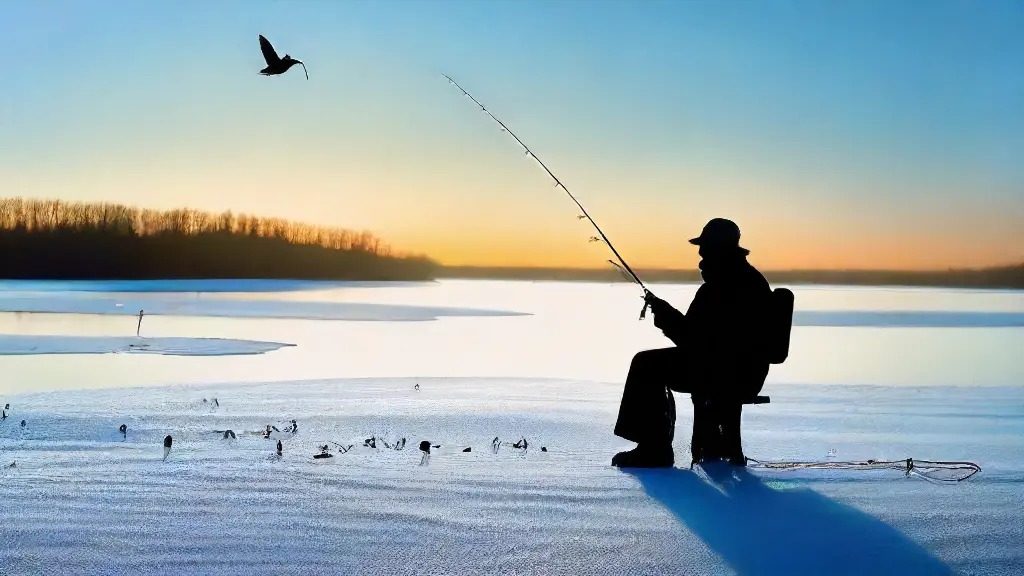
How to Keep Live Bait Alive
The art of fishing is often shrouded in mystery, but one key to unlocking success lies in the subtle science of keeping live bait alive.
When it comes to live bait care, one of the most crucial aspects is storing them properly in an aquatic environment.
This means maintaining optimal water temperature, usually between 40°F and 80°F, and monitoring water quality.
Oxygenation is also a vital component of live bait care.
Techniques such as strong water currents, air stones, or aerators can help maintain sufficient oxygen levels, which are especially important for sensitive species like Panfishing.
Live Bait Care Tips
- Maintain optimal water temperature between 40°F and 80°F for live bait.
- Monitor water quality to ensure the health and survival of live bait.
- Use techniques like strong water currents, air stones, or aerators to maintain sufficient oxygen levels.
- Sensitive species like Panfishing require extra attention to oxygen levels and water quality.
Why Ice Fishing Live Bait Works
The serene silence of the frozen lake, broken only by the sound of ice cleats crunching on the frozen surface, signals the start of another thrilling ice fishing season. One secret to success, often overlooked by many, is the magic of live bait.
With its potent scent, live bait can be the difference between a blank day on the ice and a trophy limit.
But why does live bait work so well in ice fishing? The answer lies in the science behind it.
You see, fish are attracted to smells, and live bait emits a natural scent that mimics the aroma of their natural food sources, such as Bass and Largemouth.
This concept of smell is crucial in ice fishing, as it allows anglers to present their bait in a way that’s indistinguishable from the real thing. By using live bait, you’re essentially tricking the fish into thinking there’s an injured baitfish.
What to Look for in Live Bait for Ice
As winter’s chill settles over the landscape, ice anglers embark on a quest for the perfect catch, and the right live bait is the key to unlocking a successful fishing adventure.
When it comes to selecting the perfect bait for ice fishing, size and movement of the bait are crucial, as larger, more active baits tend to attract a variety of species and habitats.
For instance, using a medium-sized bait can entice species such as panfish and yellow perch, while a smaller, more agile bait might be better suited for targeting aggressive predators like walleye and pike.
Edges can be particularly productive areas to present live bait, as these structures often hold fish looking for shelter and food among the rocks. Baits that can mimic the movement of a injured baitfish, such as a crippled shiner or a struggling fathead, can be incredibly effective in targeting species that frequent these structures.
How to Choose Live Bait for Cold Water
As angling enthusiasts, we’ve all encountered those days when the fish seem to be hiding, and our lines come back empty-handed. Cold water fishing, in particular, can be a challenging experience, especially when the fish are sluggish and finicky.
Understanding the biology of cold water is essential to selecting the most effective live bait.
When fish are sluggish, their metabolism slows down, and their appetite decreases.
This means that the usual go-to baits may not be as effective, and anglers need to adapt their strategy to match the new conditions.
Fortunately, this is where cleverly chosen live bait comes into play.
For instance, raking the bottom with a fluorescent yellow worm can be a game-changer. Bottom bouncing with a chartreuse-colored power bait can also tantalize even the most finicky fish. When fish are tipping the scales, I’m using a Chartreuse and Yellow Fluo lure with a White tail to tempt them.
What Bait to Use for Freshwater Fishing
Freshwater fishing is an angler’s paradise, where the right bait can make all the difference in catching the big one. With so many options available, it’s no wonder that many fishing enthusiasts struggle to decide which bait to use.
Natural baits, such as red-green crickets, worms, and crustaceans, have been a staple in freshwater fishing for centuries.
These live baits offer a scent and movement that can entice even the most finicky fish.
Earthworms, glow-stick-tipped jigs, and crayfish are some of the most popular natural baits used in freshwater fishing.
Artificial baits, on the other hand, offer a level of durability and versatility that can be hard to ignore. Orange-hued corn, small spinners with mealworm lures, and soft-plastic curly-tail for fishing black bass.
Freshwater Fishing
- Red-green crickets, worms, and crustaceans are natural baits that have been used in freshwater fishing for centuries.
- Earthworms, glow-stick-tipped jigs, and crayfish are some of the most popular natural baits used in freshwater fishing.
- Artificial baits offer a level of durability and versatility that can be hard to ignore, with options such as orange-hued corn, small spinners with mealworm lures, and soft-plastic curly-tail lures.
- The right bait can make all the difference in catching the big one in freshwater fishing.
Live Bait Fishing Techniques for Success
As the morning sunlight casts a golden glow on the water, the excitement of a new fishing adventure begins.
Preparing for Live Bait Fishing
Understanding the significance of choosing the right bait size and type is vital for Success.
Opting for the correct size and type of Live Bait can make all the difference in attracting the right species of Fish, while Bait Brine can enhance its natural scent to increase the chances of a Catch.
Live Bait Rigs and Presentation
A popular Live Bait rig used for panfish and bluegill is a simple bottom-bouncing rig with a small hook and a Live Bait Float, while Live Bait Suspenders are great for suspending bait in the water column. Presenting Live Bait to target Fish requires a combination of using the right Bait Brine, Bait Juice, Live Bait Floats, Live Bait Suspenders, Live Bait Sinkers to ensure an Effective, successful, and promising Catch, leading to Success with the Fish.
How to Present Live Bait Under the Ice
Frosty winter mornings, eerily still lakes, and the anticipation of reeling in a monster fish make ice fishing a thrilling experience. In the unforgiving world of hardwater fishing, the difference between catching a trophy fish and going home empty-handed can be as simple as mastering the art of presenting live bait under the ice.
When it comes to maximizing your chances of success, choosing the right type of bait is crucial.
This doesn’t just mean selecting a bait that is visually appealing, but also one that accurately mimics the natural movement and characteristics of prey.
Live bait fishing is all about creating a sense of uncertainty, as fish are naturally drawn to ambiguous and unpredictable movements. By incorporating varying pace and depth into your presentation, you can create a sense of drama that fish can’t resist. By using the right bait and mastering the art of presentation, you’ll be hooked on Ice Fishing.
Facts About Ice Fishing
- The difference between catching a trophy fish and going home empty-handed can be as simple as mastering the art of presenting live bait under the ice.
- Choosing the right type of bait is crucial for maximizing your chances of success in ice fishing.
- Live bait fishing is all about creating a sense of uncertainty, as fish are naturally drawn to ambiguous and unpredictable movements.
- By incorporating varying pace and depth into your presentation, you can create a sense of drama that fish can’t resist.
How to Source Live Bait for Year-Round Fishing
How to Use Fall Live Bait for Multi-Species Fishing
How to Use Fall Live Bait for Multi-Species Fishing

As the fall season unfolds, anglers are treated to a visual feast of fish species that migrate from their summer habitats to congregate in streams, lakes, and coastal areas.
The first step in successfully using fall live bait for multispecies fishing is understanding which species to target.
Species such as yellow perch, walleye, and crappie are known to congregate in rivers and lakes during the fall, making them prime targets for anglers.
For effective live baits, consider using curlytail grubs, minnows, and worms.
These baits are known to attract a variety of species, including bass, pike, and panfish, which can be found swimming in freshwater and saltwater environments alike. When selecting live baits, consider the type of fishing you’re doing, whether it’s Freshwater, Saltwater, Lakes, Rivers, Streams, Inland, Coastal, Shoreline, Bottom fishing, Float fishing, or Fly fishing.
Freshwater Fishing Techniques for Fall Species
As the fall season brings a delightful crispness to the air, many anglers eagerly await the opportunity to cast their lines into the tranquil waters of freshwater lakes and rivers, anticipating a thrilling showdown with diverse species.
When it comes to preparing for live bait fishing, choosing the right hooks and lines is crucial. Live baits that imitate natural food sources, such as worms, attract fish instinctively.
Opt for baits that resemble these food sources to increase your chances of a bite.
Soaking bait in attractants can also enhance effectiveness, making them more appealing to fish.
A combination of the right hook, line, and reel hook can make all the difference in your catch.
For optimal results, suspend your live baits at specific depths using a bobber and split shot, allowing you to reel in the perfect catch. This spin casting technique is sure to produce a catch with the right combination of Lures, Flies, Baits, or Worms.

What Live Baits Are Effective for MultiSpecies Fishing
Fishing for multiple species at once can be a thrilling experience, offering a diverse catch and challenging anglers to adapt to varying fishing conditions. Multispecies fishing is a popular and rewarding technique that allows anglers to target a range of fish species in a single outing, providing a unique and exciting fishing experience.
When it comes to live baits, earthworms and nightcrawlers are two of the most effective options for multi-species fishing, as they are readily available and can be used to target a variety of fish species, including panfish, trout, and bass.
Crickets and mealworms are another popular choice, as they are often used to catch panfish, trout, and smallmouth bass, and can be especially effective in murky or stained waters. In addition to these popular options, minnows can be a great bait for fishermen seeking a catch.
| Fish Species | Live Baits | Effective in |
|---|---|---|
| Panfish, Trout, Bass | Earthworms, Nightcrawlers | Clear and murky waters |
| Panfish, Trout, Smallmouth Bass | Crickets, Mealworms | Murky or stained waters |
| Variety of Fish Species | Minnows | General fishing |
Why Use Live Bait in Fall Fishing
Fall fishing is a treasure trove of opportunities, with bass eager to strike at the right hook. When armed with the right techniques and bait, the thrill of reeling in a big catch is undeniable.
From humble beginnings as a simple insect larva to the apex predators of the sea, walleye species have evolved to thrive on live prey.
In fall fishing, live bait takes center stage, offering anglers a unique opportunity to connect with their quarry in a more natural way.
Live Bait Advantages
One of the primary advantages of using live bait in fall fishing is the increased catch rate.
Studies have shown that live bait can boost catch rates by up to 30% compared to artificial lures.
This is because live bait often mimics the natural prey of trout. The lake is home to a variety of fish species, including Bass, Trout, Salmon, Walleye, Pike, Muskie, Panfish, Bluegill, Sunfish, and Redear.
How to Choose the Right Fishing Gear for Fall
As the seasons change, anglers eagerly anticipate the arrival of autumn, a time when the water takes on a new significance and the thrill of multispecies fishing becomes a reality. As the aquatic life begins to migrate, the unpredictability of the season creates an exciting challenge for even the most seasoned pros.
When it comes to choosing the right fishing gear for fall, determining the species you’re targeting is crucial.
For instance, if you’re after Crappie, you’ll want to choose baits that mimic the natural foods of these fish, such as worms and nightcrawlers.
Live Bait Options
- Worms and nightcrawlers work wonders for Crappie and other panfish. Minnows and shad are excellent choices for targeting larger species like Catfish and Carp.
Species Bait Options Targeted Species Crappie Worms and nightcrawlers Panfish Catfish and Carp Minnows and shad Larger species What Factors Affect Live Bait Effectiveness in Fall
As the fall season brings a change in the fishing game, understanding the intricacies of live bait is crucial to reeling in the big catch.
Fish react to changes in water temperature and use live bait to adapt to these shifts.
Sinking a bait to the correct depth can significantly impact the effectiveness of live bait, where Swivels play a crucial role in smooth line movement.
Migration patterns of fish can affect the effectiveness of live bait.
For example, fish tend to school and aggregate in certain areas, making live bait more effective in these locations. Rigging and presentation are key factors in targeting these aggregations.
Water clarity and turbidity have an impact on how fish perceive live bait. Aeration and oxygenation of water can also affect the effectiveness of live bait, where Storage of live bait during trips is essential to maintain its potency. Structural elements and habitat of marine life rely on Sinkers, Swivels, Snaps, Hooks, Tackle, Aeration, Oxygenation, Storage, Handling, and Rigging to optimize Hook sets.
How to Rig Live Baits for Fall Fishing Success
As the seasons change and the water cools, fall fishing presents a unique set of challenges that require a strategic approach to entice strikes. In these cooler waters, fish can be finicky, and the right live bait is crucial to landing a catch.
While some anglers may be tempted to use the same old baits, the truth is that different species have distinct preferences when it comes to live baits.
One common misconception about live baits is that they can be used interchangeably, but the reality is that different species react better to specific baits.
For instance, in fall fishing, panfish and trout are often attracted to earthworms, while largemouth bass and walleyes prefer nightcrawlers. In terms of characteristics, effective live baits typically have a strong odor, are high-protein foods, and provide sustainable fishing practices.
Facts About Fall Fishing Live Baits
- Fish can be finicky in cooler waters, and the right live bait is crucial to landing a catch.
- Earthworms are often attractive to panfish and trout in fall fishing, while nightcrawlers are preferred by largemouth bass and walleyes.
- Effective live baits typically have a strong odor, are high-protein foods, and provide sustainable fishing practices.
- Different species react better to specific live baits, and using the same old baits may not be effective in fall fishing.
Which Fish Species Thrive in Fall Fishing with Live Baits
As the autumnal breeze brings a change in the atmosphere, many anglers look forward to the excitement of fall fishing, when the right tactics can make all the difference in hooking the big one.
Fall fishing with live baits allows for increased attraction and feeding activity, making it an ideal time to target species that thrive in these conditions.
One of the key benefits of using live baits is the natural presentation they provide, mimicking the appearance and movement of real prey.
Water temperature and clarity play a crucial role in determining fall fishing success.
As the water cools, many species of fish become more active, and the right presentation and retrieval techniques can make all the difference in enticing a strike. When it comes to choosing the right live baits for well-planned fishing strategies, it’s essential to consider Species, Techniques, Methods, and Strategies that are Effective and take into account Fishing regulations, Permits, Regulations, and Seasons.
How to Store and Handle Live Bait for Fall Fishing
As the fall fishing season approaches, many anglers are eager to get out on the water and reel in a big catch. But before you cast your line, it’s essential to ensure you’re using the right live bait to increase your chances of success.
When it comes to storing and handling live bait, many anglers make common mistakes that can result in damaged or spoiled bait.
One of the most crucial steps is to inspect your live bait before heading out, checking for signs of stress or disease.
This simple step can help ensure a healthy and active batch of bait for your trip.
Live bait, such as worms and leeches, is particularly sensitive to its environment and requires specialized storage to prevent damage and spoilage. protected from any contamination and ready for use.
Essential Tips for Live Bait Storage and Handling
- Inspect your live bait before heading out to check for signs of stress or disease, ensuring a healthy and active batch for your trip.
- Live bait, such as worms and leeches, is particularly sensitive to its environment and requires specialized storage to prevent damage and spoilage.
- Store live bait in a protected environment, away from contamination, to keep it fresh and ready for use.
- Keep live bait in airtight containers or bags with adequate ventilation to maintain a healthy environment and prevent spoilage.
Best Live Bait for Ice Fishing
Best Live Bait for Summer Trout Fishing
Best Live Bait for Summer Trout Fishing

The thrill of reeling in a summer trout is unmatched. As the mercury rises, it’s time to fine-tune your tackle and bait to entice those finicky fish.
Effective Live Baits for Summer Trout Fishing
Wriggling worms, succulent nightcrawlers, and tantalizing mealworms are some of the best live baits for summer trout fishing.
These baits are not only effective but also relatively easy to find and use.
When selecting live bait, it’s crucial to consider the type of water you’ll be fishing in and the time of day. For example, juicy worms may be more effective in slower-moving waters during the early morning when they’re wriggling and squirming under the water’s surface.
What Live Bait for Trout
As anglers, we’re always on the lookout for an edge in the world of trout fishing, and using the right live bait can certainly provide one. Soft, subtle movement can entice even the most discerning trout to strike.
When it comes to understanding live bait for trout, it’s essential to start with the basics.
There are three main categories of live bait: soil-dwelling, aquatic, and subterranean.
Each type of bait has its unique characteristics, such as movement, size, color, and scent, which can impact its effectiveness on the water.
Worms: The Most Effective Live Bait
Earthworms, with their plush bodies, are among the most popular types of live bait for trout. Red worms, with their feather-like setae, added a soft, hackle-like texture to the streamer’s hair.
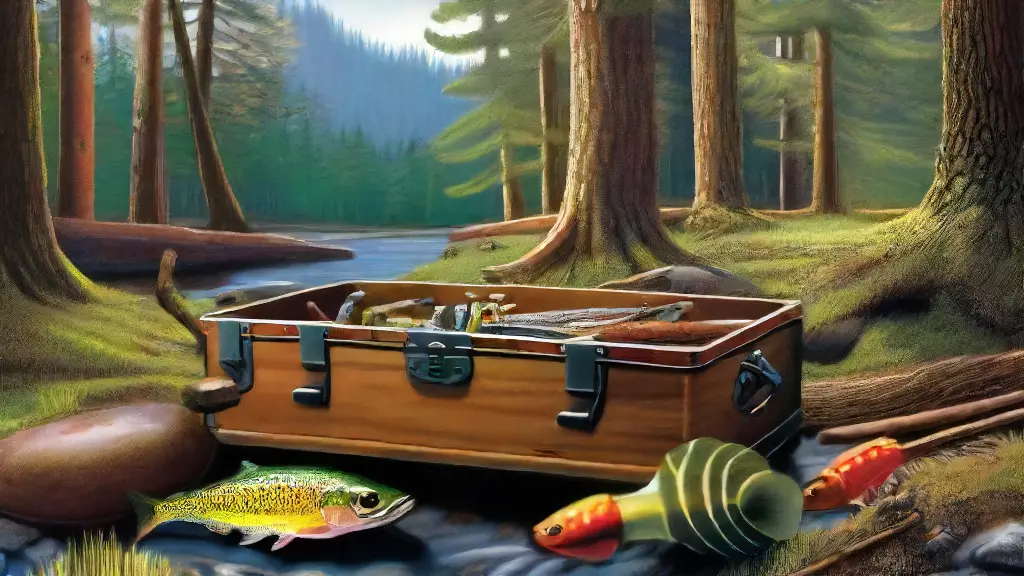
Best Jig Worms for Summer
Fishing during the summer months brings a fresh set of possibilities and intricacies to the experienced angler. While many might find the warmth a stark contrast to the chilly winter conditions, it’s crucial to adapt and make the most of this fleeting period.
As the mercury rises, fish become increasingly active, and their behavior undergoes a subtle transformation.
In summer, trout exhibit a remarkable ferocity, making them more receptive to a diverse range of lures, with live bait worms being a particularly enticing option.
Dry climates and dense vegetation can both benefit from the humble Redworm, whose rapid growth rate and ability to thrive in warmer waters make it an attractive choice for many anglers. Wet environments, on the other hand, might find Fly worms more suitable, thanks to their faster growth rate and greater adaptability. When it comes to selecting the best Dry, Wet, Fly, Fluke, Redworms, and Earthworms, Maggots are always the choice.
Floating Worms Tip
Warm summer days beckon anglers to the water’s edge, and for trout fishing enthusiasts, the challenge lies in tantalizing these finicky fish with the perfect presentation.
Trout are opportunistic feeders, constantly on the lookout for an easy meal.
They respond well to the natural movement and scent of live worms, making them an effective bait in warm weather.
By mastering the gentle wiggle of Squirmy worms, anglers can create a lifelike movement that entices trout to take the bait.
When casting and retrieving live Squirmy worms, it’s essential to maintain a natural, steady movement that mimics the worms’ wiggle. This can be achieved by using a slow and controlled retrieve, allowing the worm to move freely and convincingly. By understanding the importance of worm movement and incorporating effective presentation techniques, anglers.
Effective Hookworms Secrets
In the world of angling, a subtle yet powerful hook can make all the difference in reeling in the big catch, and mastering the art of hookworms is a key component of this strategy.
Understanding the Importance of Live Bait
————————————–
Many anglers overlook the importance of live bait, but it’s a crucial factor in attracting fish. Live baitfish, in particular, are known to mimic the natural food sources found in the water, making them an irresistible attraction for trout and other species.
Key Characteristics of Effective Hookworms.
Effective hookworms are those that exhibit specific characteristics, such as a robust body shape and a strong sense of smell.
This allows them to effectively lure fish and increase the chances of a successful catch. Choosing the Right Hookworms for Summer Fishing
———————————————
When selecting hookworms, ensure you have all necessary Permits and follow the regulations to ensure a successful and sustainable fishing experience.
Key Points About Hookworms
- Live baitfish mimic natural food sources and are irresistible to trout and other species.
- Effective hookworms have a robust body shape and a strong sense of smell, making them more attractive to fish.
- It’s essential to choose the right hookworms for summer fishing and ensure you have all necessary permits and follow regulations.
- Mastering the art of hookworms is a key component of a successful angling strategy.
Sinking Crickets for Trout
As summer’s warm weather sets in, anglers around the world eagerly anticipate the thrill of catching trout. Before making a trip to the river, it’s essential to understand the intricacies of using live bait to maximize your chances of reeling in a trophy catch.
In trout fishing, understanding the importance of sinking crickets is vital, as it can make all the difference between a day filled with excitement and one with disappointment.
Summer, with its warm temperatures and active trout, is often regarded as the ideal season for using crickets as bait.
Live bait worms play a critical role in effective cricket use, as they expertly attract the attention of even the most discerning trout. By carefully selecting the right worms to pair with your crickets, anglers can craft a potent and irresistible combination that’s guaranteed to entice the big ones.
Wriggling Worms Success
Fresh catch success begins with the perfect presentation, and natural is best. As the sun beats down on the water’s surface, summer fishing becomes a thrill seekers’ paradise, with lake temperatures warming up and fish behavior changing, making it essential to adapt your tactics.
I.
Introduction to Wriggling Worms
Defining the importance of live bait:
Live bait is often overlooked, but it’s a crucial element in a successful fishing trip.
Unlike artificial lures, live bait provides a natural, enticing presentation that fish can’t resist. As they provide a more realistic presentation that trout can’t resist in the depths of a deep reservoir or the calm waters of a shallow pond, in addition to the movement and scent of a live worm.
Soft Hackle Trick
As the summer’s warmth stirs the water’s Rocky depths, anglers must adapt to entice finicky fish.
Fishing in the heat of summer can be a challenging task, but the can be a lifesaver.
By using soft hackle flies, anglers can effectively present their lures and entice fish to bite.
Understanding the insects that inhabit the Sandy shores is crucial for successful fishing.
Insect life cycles and behaviors are closely tied to the seasons, with worms being a natural and effective bait option during the summer months. The Weedy vegetation that lines the banks of many lakes and rivers can also provide shelter and food for fish.
When setting up the Soft Hackle, fly selection and rigging are key. By creating a soft hackle using the right materials, anglers can create a fly that imitates the natural insects that fish frequent in Rocky rivers, Sandy shallows, Weedy lake margins, Vegetation-lined banks, Structure-rich dropoffs, and Edges of weed beds.
Crunchy Corn Hack
As the warm sunshine ignites the shoreline, outdoor enthusiasts of all kinds flock to their favorite waters, seeking a bounty of adventure.
The is a dynamic fishing method adaptable to various aquatic scenarios, effortlessly transition from the shallow points to the midwater depths, where trout and other species eagerly congregate.
The key to this versatile tactic lies in the selection of live bait worms, which remarkably replicate the natural feeding habits of fish, captivating even the most discerning catch.
To ensure optimal live bait worms, it’s vital to create the right environment for them to thrive. This encompasses preserving the worms in a temperature-controlled location, free from harm’s reach. Points, Banks, Shoreline, Midwater, Surface, Depth, Temperature.
Facts About The
- The is adaptable to various aquatic scenarios, allowing for effortless transitions from shallow points to midwater depths.
- Live bait worms are essential to the , as they remarkably replicate the natural feeding habits of fish, captivating even the most discerning catch.
- Preserving live bait worms in a temperature-controlled location, free from harm’s reach, is crucial to ensure optimal results.
- The can be used to catch a variety of fish species, including trout, which eagerly congregate in midwater depths.
How to Use Fall Live Bait for Multi-Species Fishing
How to Source Live Bait for Spring Fishing
How to Source Live Bait for Spring Fishing
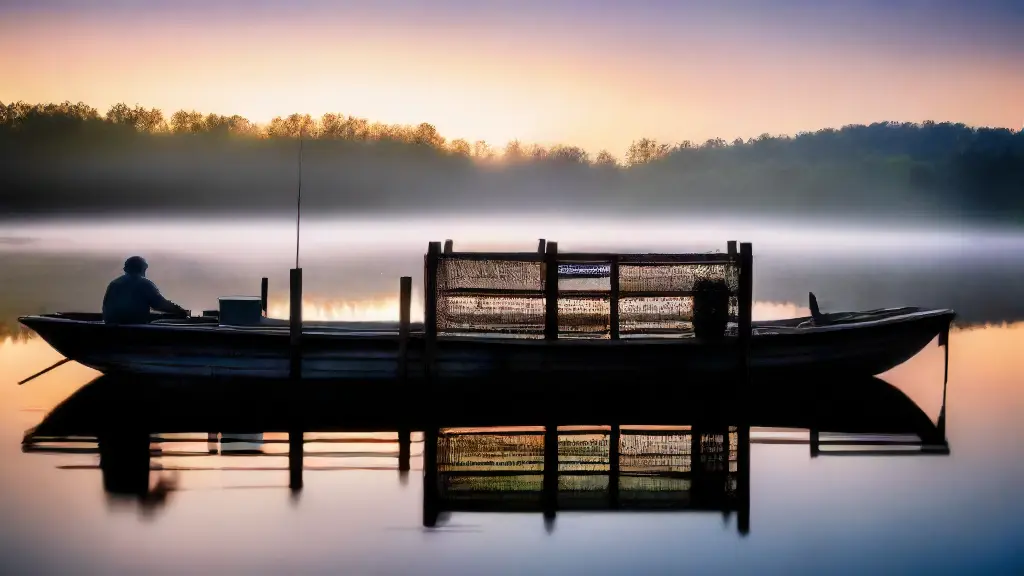
As the last wisps of winter’s chill dissipate, anglers eagerly await the warmth and vibrancy that spring brings, knowing that the resulting water temperature fluctuations will trigger a feeding frenzy among the fish.
The spring fishing season is around the corner, and anglers are eager to snag the best live bait to reel in the biggest catches.
Fresh Start for Successful Fishing
In the spring, the right live bait can make all the difference between a mediocre catch and a bounty of fish.
Fresh bait sets the tone for a successful fishing day, as proven by expert fishermen.
It’s essential to understand that a single type of bait won’t work every time. Finding the most effective and abundant live bait is crucial. Having an effective source of abundant live bait and lures is crucial for catching fish in the spring, making flexibility key to a successful fishing trip with a hook that’s always ready.
Whats the Best Live Bait Source
For outdoor enthusiasts, there’s nothing quite like the rush of reeling in a trophy catch. Whether you’re a seasoned pro or a weekend warrior, the pursuit of the perfect catch is a timeless thrill.
Many anglers swear by live bait, and for good reason.
Not only does it mimic the natural food sources of many species, but it also provides a more subtle and enticing presentation than artificial lures.
Live bait fishing is a popular choice among anglers, and for good reason. Native insects, found in regional waterways and lakes, can be some of the most effective and abundant live baits.
When it comes to locating these sources, timing is everything. Knowing when to search and what to look for can make all the difference in finding the best varieties for your fishing trip. From tiny ants to juicy grasshoppers, the world is home to a vast array of species that can be caught and inspected on a local fishing charter through the tackle shop, offering regional varieties of waterways and lakes to explore.
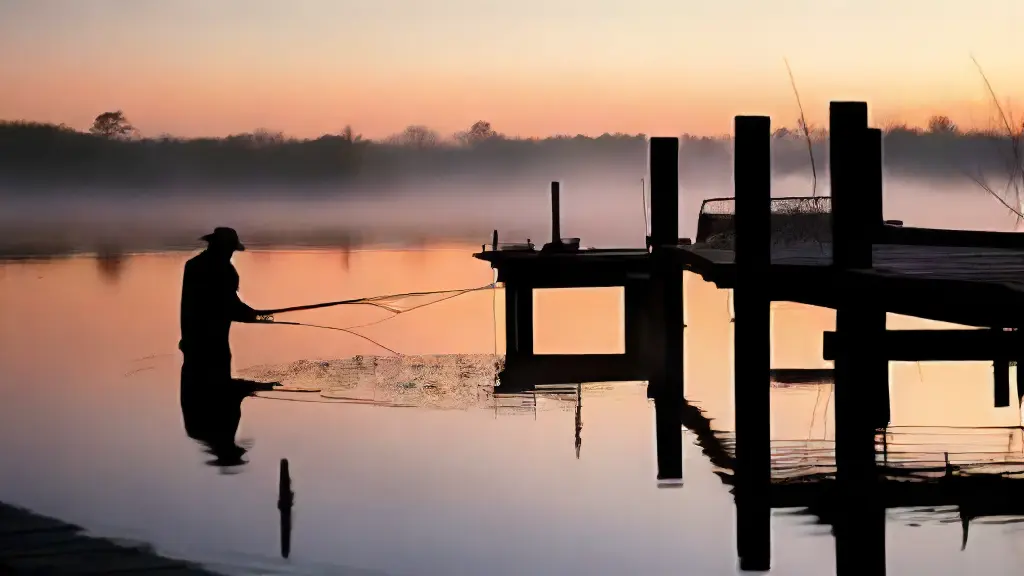
Tips for Finding Abundant Live Bait
Embarking on a fishing adventure can be an exhilarating experience, but it’s crucial to have the right tools to increase your chances of reeling in a big catch. As many outdoor enthusiasts know, rivers, streams, and ponds are teeming with aquatic life, offering a diverse range of opportunities for finding live bait.
The benefits of using live bait are numerous.
For one, it more closely mimics the natural food source, making it a more enticing attractant for fish.
Live bait can be used in a variety of fishing techniques, from casting to bottom fishing, giving anglers more flexibility when it comes to targeting their favorite species.
When to use live bait: Live bait is particularly effective during times of transition, such as when fish are moving from one habitat to another or during changes in water temperature
Facts About Live Bait Fishing
- Live bait more closely mimics the natural food source, making it a more enticing attractant for fish.
- Live bait can be used in a variety of fishing techniques, from casting to bottom fishing, giving anglers more flexibility when it comes to targeting their favorite species.
- Live bait is particularly effective during times of transition, such as when fish are moving from one habitat to another or during changes in water temperature.
- Rivers, streams, and ponds are teeming with aquatic life, offering a diverse range of opportunities for finding live bait.
How to Sustainably Source Live Bait
As fishing enthusiasts, we’re no strangers to the delicate balance between our passion for the sport and the well-being of the planet. Ecofriendly practices have become a crucial aspect of modern angling, and one area that warrants attention is the sustainable sourcing of live bait.
Live bait, which includes insects, crustaceans, and small fish, offers a range of advantages over artificial lures, including increased attraction rates and enhanced survival rates of targeted species.
The widespread use of live bait can have detrimental environmental impacts, such as habitat destruction and the introduction of invasive species.
To mitigate these effects, it’s essential to adopt conservation-friendly strategies when sourcing live bait, starting with an assessment of the resources available in your area. This responsible approach can be achieved by exploring local, sustainable options for collecting bait, such as using eco-friendly traps or techniques, and incorporating environmentally conscious gear and tactics into your tackle box to support conservation and sustainability.
Are Spring Fishing Bait Suppliers Reliable
As the seasons change and the weather warms up, many anglers begin to dust off their navigation systems, mapping out their next fishing expedition. The thrill of reeling in a big catch is just around the corner, but before casting a line, it’s crucial to ensure a steady supply of high-quality bait.
The reliability of bait suppliers is crucial, as a delayed or low-quality delivery can ruin the entire fishing experience.
Inconsistencies in the supply chain, adverse weather conditions, and seasonal demand can all impact the availability and quality of bait.
It’s essential to understand these factors to make informed decisions when selecting a supplier.
In the next section, we’ll delve into the signs of unreliable bait suppliers and provide strategies for finding consistent and plentiful inventory. But first, let’s take a closer look at the factors, such as equipment, navigation, mapping, and GPS, which all play a crucial role in determining the correct coordinates and directions for driving, boating, or even walking.
Facts About Bait Supply
- Inconsistencies in the supply chain can impact the availability and quality of bait.
- Adverse weather conditions can affect the reliability of bait suppliers.
- Seasonal demand can also impact the availability and quality of bait.
- A delayed or low-quality delivery can ruin the entire fishing experience.
Effective Live Bait for Spring Fishing species
As the mercury rises and outdoor enthusiasts stir from their winter slumber, thousands of anglers nationwide flock to waterways in anticipation of the spring fishing season’s arrival. Before casting a line, it’s crucial to obtain the necessary fishing permit and familiarize oneself with the local regulations to ensure a safe and enjoyable experience.
Worms: A Classic Choice
Red wigglers and nightcrawlers are two of the most popular types of worms used as live bait for spring fishing.
These earthworms are abundant and can be easily caught in your backyard or purchased at a local tackle shop.
They’re effective for catching a variety of species, including panfish, trout, and bass.
Dew worms and red wigglers are particularly well-suited for targeting panfish, such as bluegill and sunfish. When fishing for panfish, it’s essential to familiarize yourself with the regulations, rules, and restrictions for the specific access points and closed areas you plan to wade through, and to ensure you have a valid fishing license and permit for the seasons you plan to fish.
Can I Use Online Retailers for Live Bait
The art of reeling in a big catch is a thrill unmatched by few other experiences, but obtaining the right bait can be a daunting task, especially for newcomers to the world of fishing.
Live bait, such as nightcrawlers, red worms, and crickets, plays a crucial role in fishing as it mimics the natural prey of fish, increasing the chances of a successful catch.
Traditionally, anglers have obtained live bait from local bait shops, fishing stores, or even caught their own.
One popular option that has gained popularity is online retailers.
Convenience: accessibility of online retailers from parking anywhere with an internet connection parking accessibility of online retailers from parking anywhere with an internet connection
Advantages of Online Retailers for Live Bait
Broad selection götürmesini broad selection.
| Advantages | Disadvantages | Traditional Options |
|---|---|---|
| Broad selection of live bait | May not match local species | Local bait shops, fishing stores |
| Convenience: accessibility from anywhere | May require shipping, handling | Catch your own |
| 24/7 availability | May not have local knowledge | Local bait shops, fishing stores |
Why is Locally Sourced Live Bait Important
Fishing holds a special place in the family’s recreational traditions, where memories are forged and stories are told.
A significant impact of locally sourced live bait is its affect on local ecosystems. By supporting local suppliers, you’re helping to maintain the delicate balance of these ecosystems and ensuring the long-term sustainability of the species you’re targeting.
Locally sourced live bait is also fresher and of better quality, harvested closer to the time of use, minimizing the risk of spoilage and ensuring that your bait is as lively and effective as possible, making a big difference in the sport.
Choosing locally sourced live bait can have significant economic benefits, supporting local businesses and communities, creating experiences that benefit all. These recipes, stories, experiences, memories, family, recreational, competitive, sport, and leisure activities have become meaningful parts of my heritage.
What are the Best Spring Fishing Waterways for Live Bait
As the warmth of spring awakens the great outdoors, many anglers can’t help but be drawn to the thrill of live bait fishing.
One of the most crucial factors in determining the effectiveness of live bait fishing is the waterway itself.
Rivers, lakes, streams, and bayous all offer unique environments that can make or break a fishing trip.
For instance, rivers like the Mississippi and Missouri offer a diverse range of fish species and habitats, making them ideal for live bait fishing.
The changing water levels and currents create a dynamic environment that fish love, and anglers can take advantage of this by using live bait to target species like catfish and carp.
Lakes provide a serene and peaceful aquatic wildlife home that is perfect for anglers seeking a more relaxed fishing experience. The calm water and abundant aquatic vegetation create a haven for many species of fish and wildlife that thrive in this unique ecosystem.
| Waterway | Fish Species | Habitat | Fishing Experience |
|---|---|---|---|
| Rivers (Mississippi, Missouri) | Catfish, Carp | Diverse, Dynamic | Thrilling |
| Lakes | Various Species | Serene, Abundant Vegetation | Relaxed |
| Streams, Bayous | Varying Species | Unique, Changing Environments | Dynamic |
Best Live Bait for Summer Trout Fishing
Best Live Bait for Fall Walleye Fishing
Best Live Bait for Fall Walleye Fishing
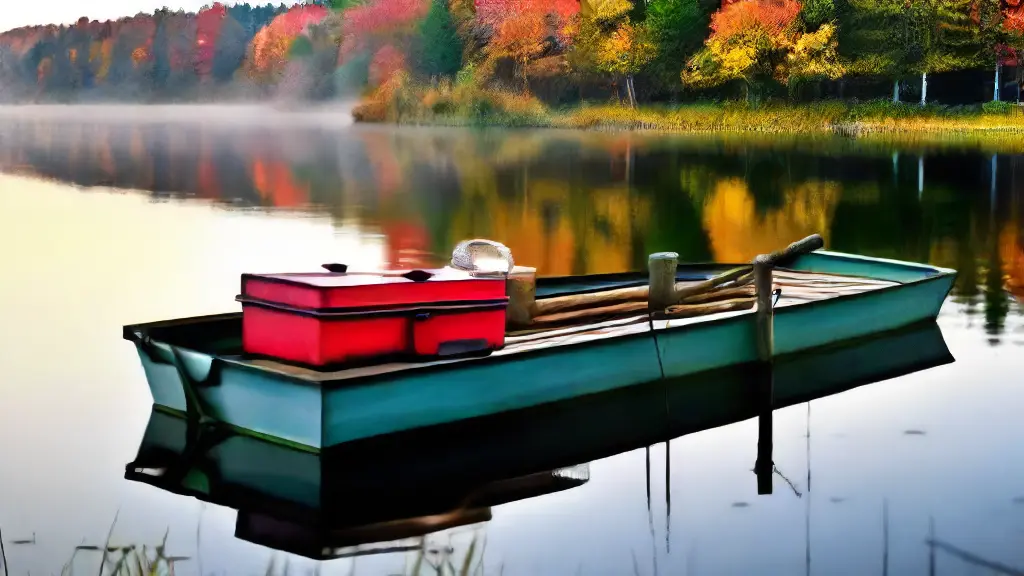
As the days shorten and the air grows crisp, many anglers find themselves drawn to the tranquil waters of autumn, where the thrill of reeling in a prized catch is within reach. With the right live bait, the thrill of fall Walleye fishing can be a reality.
-
- Leeches, in particular, have proven to be a staple in many anglers’ fall Walleye arsenal, as their slimy texture and wiggling motion seem to mimic the natural movement of injured baitfish.
- During the fall season, worms continue to thrive as a top choice among anglers, their sweet aroma wafting enticingly through the air.
- Live leeches have been used for centuries to catch walleye, with historical records dating back to early observations on their effectiveness.
- Leeches are bottom-dwelling bait that can be used to entice walleye and other species of fish.
- Traditional techniques like live baiting remain a staple in many anglers’ arsenals, despite the popularity of modern fishing techniques like crankbaits and spinnerbaits.
- Live leeches are a versatile bait that can be used in various fishing scenarios, from rivers to lakes and reservoirs.
- Polarized glasses can help spot submerged structures on a clear day.
- Walleye target structures such as rocky shorelines, weed beds, and sunken logs to ambush prey.
- A reliable crankbait can increase your chances of hooking a feisty walleye.
- Patience and skill are essential for a successful walleye fishing experience.
- Walleye temperatures between 60°F and 70°F are ideal for optimal feeding and spawning habits.
- Understanding walleye behavior patterns can significantly improve your chances of success.
- Identifying walleye times, or periods of peak activity, can increase your chances of catching a bite.
- Adapting to changing conditions, including walleye temperatures, times, tides, phases, cycles, and stages, is crucial for successful walleye fishing.
.
What Does Best Live Bait Mean
As fishermen, we’re constantly on the hunt for the perfect catch, and the secret to success often hinges on the bait we choose to cast our lines with. Golden shiners, a type of minnow, are a popular choice among anglers for their high attractiveness and ease of use.
There are many types of lures and baits available, but some of the most effective are live baits, which offer a natural, enticing presentation that attracts fish.
Golden shiners, a type of soft plastic, are a popular choice among anglers for their high attractiveness and ease of use.
Live bait refers to a type of bait that is alive, such as insects, worms, or even small fish, which are presented to fish in their natural state. Curly tail grubs, a type of swimbait, are another example of a live bait that can be effective.

Are Leeches Effective for Walleye
The use of live leeches.
As anglers continue to refine their craft, a resurgence in the popularity of traditional techniques has sparked renewed interest in the effectiveness of live leeches for catching walleye. Crankbaits and spinnerbaits may dominate modern fishing scenes, but ancient techniques like live baiting remain a staple in many enthusiasts’ arsenals.
The historical significance of bottom-dwelling bait like leeches can be traced back to early observations on their effectiveness in catching key species. strong>use of live bait as a means to entice these species of fish.
.
Live Leeches for Catching Walleye
Why Use Nightcrawlers for Fall Fishing
As the fall season brings a cascade of color and change to the outdoors, anglers often find themselves seeking a reliable bait that can withstand the unpredictable weather conditions. When it comes to fall fishing, nightcrawlers have proven to be a trusty companion for many.
Fall fishing patterns are influenced by key changes in water temperature and chemistry, which can be attributed to the changing seasons.
This shift in environmental conditions triggers a series of biological responses in trout, making them more active and susceptible to feeding.
Prey migration and increased activity are two crucial factors to consider when using nightcrawlers for fall fishing. Migratory food sources, such as baitfish and insects, become more concentrated in specific areas, making it easier for anglers to target these sources during migration. Sinkers attached to the line help to get the nightcrawlers to the bottom of the water.
Whats the Best Crankbait for Walleye
Casting a line into the crystal-clear waters of a walleye-infested lake is a thrilling experience that requires the right combination of skill, patience, and tackle. With the help of a reliable crankbait, you can increase your chances of hooking a feisty walleye and savoring the excitement of the fight.
Polarized glasses can’t be beaten for spotting submerged structures on a clear day, making them a crucial piece of tackle for any walleye enthusiast.
With the right crankbait, walleye fishing can be a thrilling and rewarding experience. Walleye are known to target structures, such as rocky shorelines, weed beds, and sunken logs, where they can ambush prey.
Walleye Fishing Tips
How to Choose the Right Lures
Effective fishing relies on a deep understanding of aquatic ecosystems and the habits of the species you’re targeting. When anglers can accurately mimic the appearance, sound, and movement of a fish’s natural prey, they’re more likely to entice a bite.
With so many lure options available, it’s crucial to choose the right one for the job.
In the world of angling, understanding your target species is crucial.
Predator species, such as pike and muskie, are attracted to lures that mimic their natural prey, whereas prey species, like walleye, respond better to lures that imitate their natural food sources. For instance, a walleye lure with a slow, subtle retrieve is often more effective than a fast-moving lure.
Water temperature, clarity, and depth also play a significant role in lure selection. For example, livewells and bait keepers are essential fishing gear for any walleye enthusiast, while bait buckets and water aerators are useful tools for managing the catch.
Whats the Key to Successful Fishing
Freshwater fishing, a beloved pastime for many, demands a thorough comprehension of the intricacies involved. Understanding the behavior of various species, coupled with an appreciation for the complex interplay between environmental factors and presentation techniques, is essential for success.
The key to successful fishing lies in the ability to adapt to changing conditions and experiment with different approaches.
According to experts, walleye habits are particularly influenced by the time of year, with fish exhibiting different behaviors during walleye patterns.
For instance, during this period, walleye migration patterns dictate that fish congregate in shallower waters, and are more likely to be caught using slow-moving lures and baits. Bait selection is a crucial aspect of fishing, and choosing the right bait for the job can make all the difference in effective walleye tactics and techniques, particularly during fall fishing when understanding walleye patterns, habits, and behavior is key to successfully targeting them in their migrational and schooling patterns.
Time of Year Walleye Behavior Bait Selection Fishing Techniques Spring Shallow waters, active feeding Fast-moving lures, live bait Fast retrieval, aggressive presentation Fall Shallow waters, schooling behavior Slow-moving lures, artificial baits Slow retrieval, subtle presentation Are Soft Plastics Good for Fall Fishing
Fishing in the fall season often requires a mix of art and science, as anglers need to adapt to changing water conditions and finicky fish. One strategy that can pay off is using soft plastic lures, which have gained popularity among fall fishers due to their versatility and effectiveness.
Soft plastic lures are a popular choice in fall fishing due to their versatility and effectiveness.
They can mimic the appearance and movement of injured baitfish, which is a common food source for many fall species.
In the fall, fish are often opportunistic feeders, and soft plastics excel at imitating crawdads and other aquatic invertebrates that are attracted to vegetation and structure. Walleye areas, in particular, thrive in zones with submerged structure, making soft plastics an ideal choice for targeting these areas. Fall fishing often requires a more deliberate and slow presentation, which soft plastics can be drifted over walleye zones to capitalize on their natural feeding areas at walleye hotspots and soft structure.
Whats the Secret to Catching Walleye
Lake fishing is a thrill that few things can match, as the warm sun on your back and the gentle lapping of the water against the shore create a sense of tranquility that’s hard to find elsewhere.
The dynamics of walleye behavior are influenced by various factors, including water currents, structure, and of course, temperature. In fact, research suggests that walleye temperatures between 60°F and 70°F are ideal for optimal feeding and spawning habits.
Understanding these patterns can significantly improve your chances of success.
By identifying the walleye times, or periods of peak activity, you can increase your chances of catching a bite.
Another crucial aspect of fishing for walleye is adapting to changing conditions. Whether you’re fishing for walleye, it’s essential to consider walleye temperatures, walleye times, walleye tides, walleye phases, walleye cycles, and walleye stages.
Walleye Fishing Insights
How to Source Live Bait for Spring Fishing
How to Store Seasonal Live Bait for Winter Fishing
How to Store Seasonal Live Bait for Winter Fishing
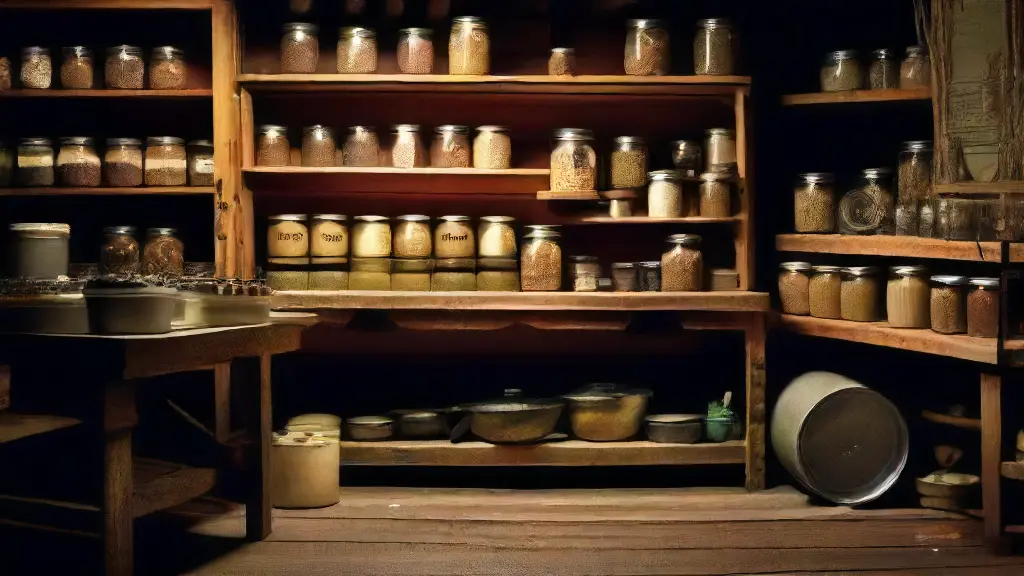
As the seasons change, anglers anticipate the lucrative bounty that comes with winter fishing. A crucial aspect of this successful pursuit is ensuring the quality of live bait during its seasonal abundance, when the timing is everything.
During the brief window of abundance, capturing the perfect catch requires precise timing.
Live bait thrives in specific environments, and understanding these conditions is crucial for successful harvesting.
A sturdy storage container is the foundation of effective bait storage. Without proper equipment, your live bait may spoil, rendering your winter fishing trips unsuccessful.
The timing of live bait collection is critical. The abundance of bait varies depending on the species and location.
Understanding the optimal harvesting period is essential for reaping the rewards of your efforts. Ade based her winter fishing strategy on the abundance of bait available, and then spent the rest of the season on maintenance and preservation of the habitat by using a special container for storage.
Winter Fishing Bait Storage Tips
As the snowflakes start to fall, fishermen must think ahead to ensure their live bait storage systems are equipped to handle the harsh winter conditions, safeguarding the health and vitality of their catch.
One common mistake to avoid is inadequate preparation, which can lead to a decline in bait quality and ultimately, a decrease in fishing success.
Preparation is key, and this starts with understanding the specific needs of your live bait.
Water quality control is another crucial aspect of winter fishing bait storage.
Monitoring and maintaining optimal water conditions is essential to prevent the growth of bacteria and other microorganisms that can harm your bait, ensuring aeration and circulation are maintained at all times.
Bait housing and containment are also critical considerations. A sturdy bag with a secure lid can help prevent escape and maintain optimal water conditions, while a mesh enclosure can provide aeration and filtration, keeping your bait well-nourished and healthy.

Whats the Best Container
Proper storage of live bait is a matter of great importance for anglers, as it significantly impacts the well-being of their catch. When it comes to maintaining a healthy environment for live bait, there are several essential conditions to consider.
Adequate temperature control is the first step in maintaining a healthy environment for your live bait.
A temperature range of 32-55°F (0-13°C) is ideal, as it prevents the growth of disease-causing parasites and maintains the bait’s natural behavior.
Next, it’s essential to provide adequate aeration to prevent suffocation. This can be achieved by incorporating oxygen-permeable materials or regular water changes to maintain a healthy water circulation.
Humidity levels also play a critical role in live bait storage. Aim for a relative humidity of 80-100% to prevent dehydration and stress. This can be achieved by wrapping.
Live Bait Storage Essentials
- A temperature range of 32-55°F (0-13°C) is ideal for maintaining a healthy environment for live bait.
- Oxygen-permeable materials or regular water changes can help prevent suffocation and maintain a healthy water circulation.
- A relative humidity of 80-100% is recommended to prevent dehydration and stress in live bait.
- Wrapping live bait in a breathable material can help maintain the desired humidity levels.
How to Maintain Bait Health
As the seasons change, anglers must be proactive in preserving the integrity of their live bait to ensure a prosperous fishing season. Proper storage and care can make all the difference between a successful catch and a disappointing outing.
I.
Introduction
—————-
Maintaining healthy live bait during winter months is a critical aspect of ensuring successful fishing trips.
By understanding the importance of proper storage and care, anglers can avoid common pitfalls that lead to bait decline and ensure a successful fishing season.
II.
Preparing Live Bait for Winter Storage
—————————————–
### Optimal Water Conditions for Live Bait Storage
Storing live bait in water with optimal conditions is essential for maintaining its health, requiring careful packaging and labeling to prevent contamination. A moderate temperature range of 40°F to 55°F (4°C to 13°C) and a pH level between 0 and 5 should be maintained to ensure compliance with best practices for packaging, labeling, inventory, scheduling, planning, and implementing an effective strategy, utilizing tactics, techniques, and expert advice, while also following tips to guarantee product integrity.
Why Freeze Live Bait
Freezing. With the right technique, anglers can turn a limited supply of live bait into a perpetual catch.
One of the primary reasons why live bait goes bad quickly is due to improper storage.
When left at room temperature, live bait can spoil within hours, rendering it useless for fishing.
This is because live bait is a food source for many microorganisms, which can quickly multiply and cause the bait to deteriorate.
The consequences of using spoiled bait can be severe, as it can not only reduce the effectiveness of your fishing trip but also pose a risk to your health.
Consuming spoiled bait can lead to food poisoning, which can cause a range of symptoms including nausea, vomiting, and diarrhea. I was able to find the most effective resources, including tricks, hacks, DIY tutorials, guides, manuals, books, articles, blog posts, and social media, as well as online forums.
Live Bait Storage and Handling
- Live bait can spoil within hours when left at room temperature.
- Improper storage is a primary reason why live bait goes bad quickly.
- Consuming spoiled bait can lead to food poisoning, causing symptoms such as nausea, vomiting, and diarrhea.
- Using the right technique can turn a limited supply of live bait into a perpetual catch.
Best Methods for Storage
When it comes to the world of live bait, storage methods play a crucial role in maintaining the health and vitality of the catch. Online forums and social networks filled with anglers and fishermen alike share their experiences and tips on preserving the quality of live bait, emphasizing the importance of thoughtful storage practices.
One popular method for freezing live bait is to freeze it in small groups or containers, allowing for easy access and organization.
Strong-smelling baits like nightcrawlers can be wrapped in plastic wrap or aluminum foil to prevent odors from seeping into other containers.
Storing live bait requires attention to basic principles, including aeration, temperature and humidity control, and darkness.
Retailers recommend storing bait in a dark area to prevent photodegradation, which can reduce its potency and shelf life. Beyond keeping in touch with customers through discussion boards, communities, networks, marketplaces, shops, stores, retailers, suppliers, manufacturers, and distributors, wholesalers.
How to Keep Bait Fresh
As nature lovers venture into the great outdoors, the reliability of their bait can be the difference between a successful fishing trip and a disappointing one. Fishing is a beloved pastime that brings people together, from casual anglers to expert breeders, and the quest for the perfect catch is a thrill shared by many.
When it comes to bait, freshness is key, and failure to maintain its quality can result in subpar results.
Facts About Fishing Bait
- Fresh bait can increase the chances of catching a fish by up to 30%.
- The average angler uses around 10-15 baits per fishing trip.
- The most popular type of bait used by anglers is worms, accounting for 60% of all bait used.
- The quality of bait can affect the size and type of fish caught, with high-quality bait resulting in larger and more desirable catches.
Whats the Ideal Storage Environment
In today’s ecofriendly pursuit of angling, it’s essential to consider the environmental impact of our actions. As we strive for a more organic connection with nature, we must prioritize responsible practices that benefit both the planet and the fish we love.
Ensuring Adequate Air Circulation
Proper air circulation is vital for maintaining a healthy and thriving live bait storage environment.
Benefits of proper air circulation for live bait storage include reduced stress and increased longevity of the bait.
This can be achieved through the use of fans or by providing adequate ventilation in the storage container.
Temperature Control for Optimal Storage
Temperature control is another critical aspect of live bait storage.
Recommended temperature ranges for live bait vary depending on the species, but generally, temperatures between 35°F and 45°F are considered optimal for most species. Let me know if you need more information on sustainable fishing practices, such as wildcaught and catchandrelease methods that promote aquatic health and protect our natural water resources.
Live Bait Winter Storage Strategies
Winter’s chill can be unforgiving, but it’s essential to safeguard your live bait to ensure a successful fishing season.
Insulate and Protect
Maintaining a precise humidity level between 30°F and 50°F is crucial for preserving the quality of your live bait.
You can achieve this by using specialized containers with insulation or wrapping your bait in a breathable material like cloth or paper.
For added protection, consider storing your bait in a controlled environment, aiming for a relative humidity of 60-80%.
Keep it Moving
Regularly aeration and rotating your stock is essential for preventing stagnation and promoting healthy bait development. This can be done by regularly transferring your bait to a new tank and introducing a gentle stream of oxygen-rich water. Let me know if you need any further assistance with monitoring the temperature, humidity, and moisture levels in the aquarium tank ecosystem to prevent the freezing and thawing of the water.
Safeguarding Live Bait for a Successful Fishing Season
- Maintaining a precise humidity level between 30°F and 50°F is crucial for preserving the quality of your live bait.
- Using specialized containers with insulation or wrapping your bait in a breathable material like cloth or paper can help achieve this humidity level.
- Storing your bait in a controlled environment, aiming for a relative humidity of 60-80%, can provide added protection.
- Regularly aeration and rotating your stock is essential for preventing stagnation and promoting healthy bait development.
Best Live Bait for Fall Walleye Fishing
Best Live Bait for Summer Catfish Fishing
